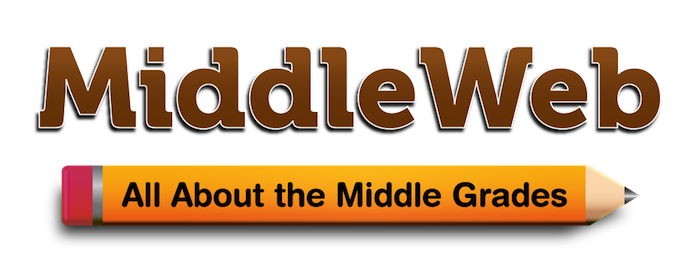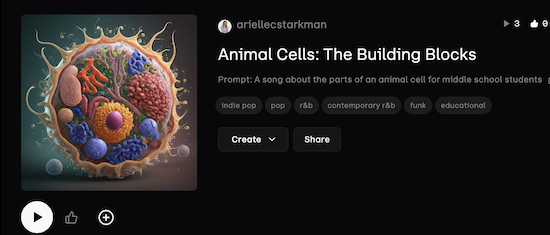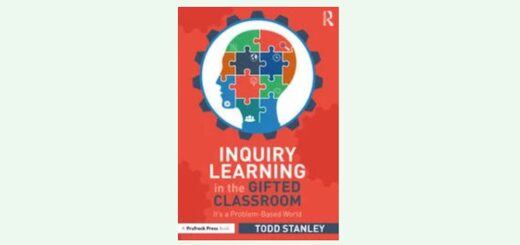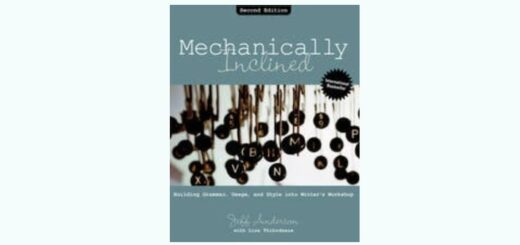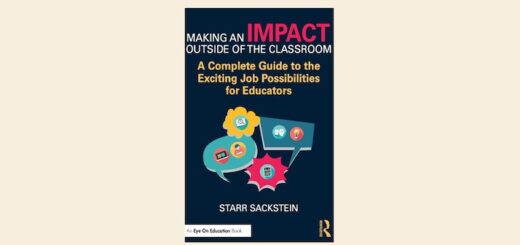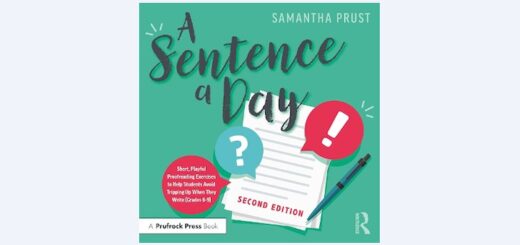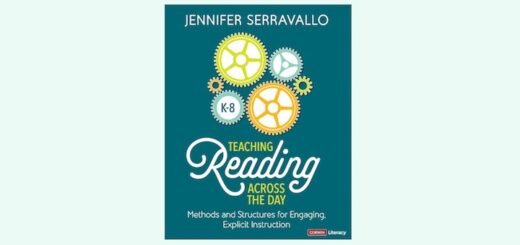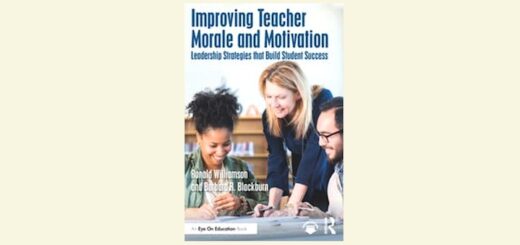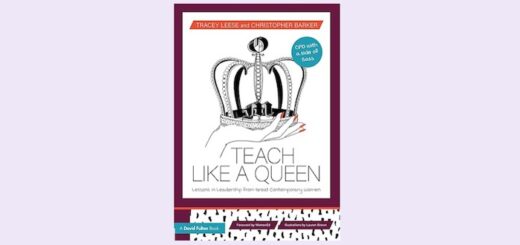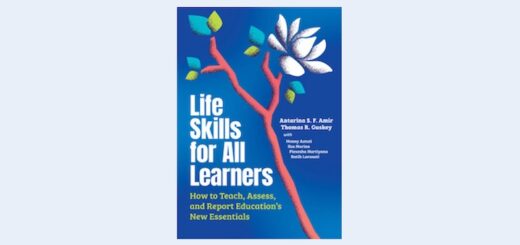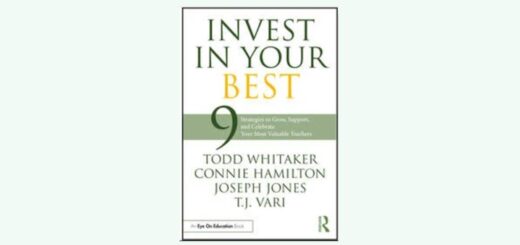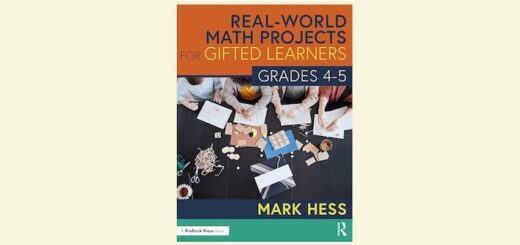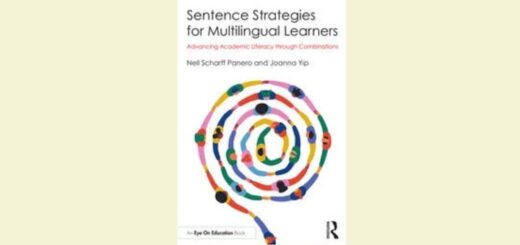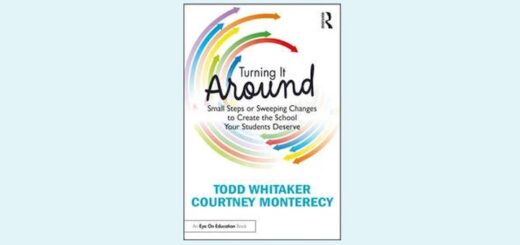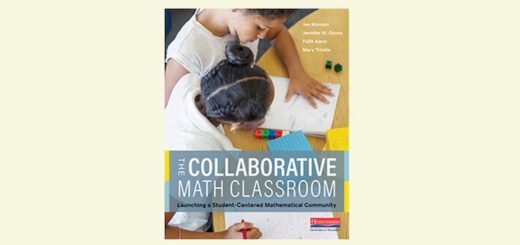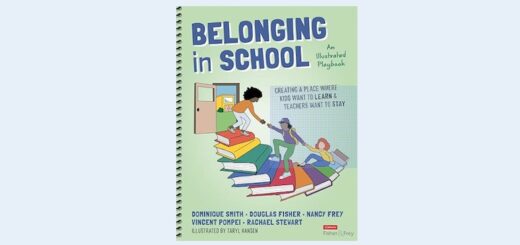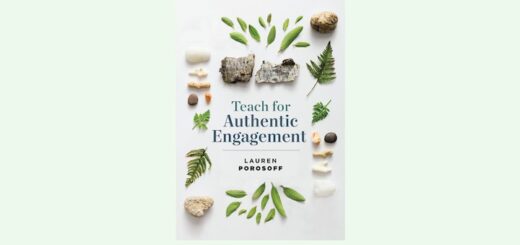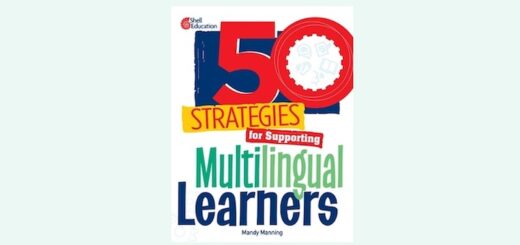These AI Prompts Can Support Your Teaching
A MiddleWeb Blog
 As someone who works with undergraduate students preparing to enter the teaching profession, I’ve found myself in more than one heated discussion this year about how much AI should be utilized by educators.
As someone who works with undergraduate students preparing to enter the teaching profession, I’ve found myself in more than one heated discussion this year about how much AI should be utilized by educators.
This discussion reflects a wider debate. Many see AI’s potential as a skilled co-teacher for ideas, lesson refinement, and personalized learning (Joseph & Uzondu, 2024). However, critics worry about over-reliance hindering teachers’ critical thinking and creativity – “cognitive offloading.”
All of this raises the question: how much should educators embrace AI?
To understand this balancing act, let’s take a flight back in time. Picture the original, 1980’s Top Gun movie where the F-14 Tomcat pilots were masters of “stick and rudder” flying. They relied heavily on their own skill and instinct, manually controlling their aircraft and interpreting raw data to make split-second decisions in the heat of a dogfight.

Now, fast forward to the more recent movie Top Gun: Maverick. The new fighter jets are marvels of technology, with advanced computers and systems handling much more of the workload. While pilot skill is still vital, the modern aviator now works in tandem with these intelligent systems, understanding and leveraging their capabilities.
This evolution in aviation, from the analog mastery of the Tomcat to the tech-integrated expertise of the modern fighter jet, offers a useful metaphor for thinking about the integration of AI in our classrooms.
Learning to fly with AI as your co-pilot
Back in October, I presented suggestions on how to use AI to find and adapt engaging, cross-curricular texts for students to use. In a post last February, I shared ideas for utilizing Google Gemini, CoPilot, and ChatGPT to brainstorm a wide range of creative and engaging task ideas, authentic scenarios/contexts, and even provide suggestions for assessment and feedback.
Just like Maverick had to trust the tech in his jet while never losing sight of his instincts and training, teachers today are learning how to fly with AI as a co-pilot – not a replacement. Ultimately, while AI offers valuable assistance, the professional responsibility lies with teachers to carefully evaluate and thoughtfully curate and adjust any AI-generated suggestions before integrating them into their instruction. A few guidelines for doing so include…
- Always cross-check AI-generated content with curriculum standards or trusted sources.
- Avoid copying and pasting – revise, adapt, and personalize AI suggestions to ensure they meet the needs of your students.
- Treat AI as a “first draft” buddy, not a final decision-maker.
Over the past year, I’ve worked with teachers to explore dozens of ways AI tools like ChatGPT, Gemini, and CoPilot can support – not supplant – our work. Below, I’ve compiled a categorized list of practical, classroom-ready AI prompt examples that can streamline our planning, enhance our lessons, and deepen our assessments.
These prompts (in blue) are crafted with teachers in mind – especially those who want to work smarter without compromising rigor, creativity, or student connection. Think of this guide as a launchpad to get started – with prompts tailored to the real work you’re already doing.
Prompting AI to help us better understand our subject matter
- Provide an overview of [scientific theory, mathematical concept, historical period, literary movement, etc.] with examples.
- In simple terms, summarize the key principles of [topic] in a way that a new teacher can understand and teach it to students.
- Use an analogy and simple language to explain [topic] to a new teacher.
- In simple terms, summarize the key principles of [topic] in a way that a new teacher can understand and teach it to students.
- List common misconceptions about [topic] and provide correct explanations.
- Suggest reliable sources for further reading on [topic].
Design Retrieval Practice and Spiral Review Activities
Create five retrieval practice activities to help students review and reinforce these previously learned skills: [insert list]. Include both individual and group formats.
AI Prompts for Gamification and Game-based Learning
►Assume the role of a veteran [enter your grade and content area] teacher working to improve a lesson on the following learning outcome(s): [enter your standard(s), outcome(s) or topic]. Please create 5 ways that I could use gamification to help students to learn what I am teaching.
Language like this may improve results: As a reminder, gamification involves integrating game design elements into learning to boost student engagement. It uses mechanics like points and challenges, applicable to both digital and non-digital environments. The goal is to make learning more interactive and motivating without altering the core educational content.
►Assume the role of a veteran [enter your grade and content area] teacher working to improve a lesson on the following learning outcome(s): [enter your standard(s), outcome(s) or topic]. Please create [5] suggestions for “serious games” that I could use to help my students experience and learn what is being taught.
Language like this may improve results: As a reminder, “serious games” are fully-fledged games designed with a primary purpose beyond entertainment, focusing on education, training, or informing; unlike gamification, where game elements are added to existing activities, serious games embed learning content directly into their mechanics and narrative, making the game itself the core educational tool. Their focus is on delivering knowledge or skills through an engaging and interactive gameplay experience, rather than simply adding game-like features to traditional learning materials.
►Generate and develop a classroom simulation based on [event/concept], including student roles, context, and guiding questions for a Socratic seminar.
Prompting AI to help us understand standards
►Prompting AI to help unpack our content standards then develop essential questions and learning outcomes at different levels of Bloom’s taxonomy
Assume the role of a veteran [insert content area and grade level] teacher. Please unpack the following content standards into essential knowledge, skills, and vocabulary. Then, develop two learning outcomes at each level of Bloom’s Taxonomy and create several open-ended, engaging essential questions that would pique students’ interests and introduce the topics/skills being addressed. Standard: [insert standard].
►Help to break down complex standards into student-friendly language
Assume the role of a veteran [insert content area and grade level] teacher. Rewrite this state standard [insert standard] in student-friendly language suitable for a [grade level] class.”
►Provide real-world applications of a standard
Assume the role of a veteran [insert content area and grade level] teacher. Give real-world applications and career connections that would pique students’ interests for this standard: [insert standard].
AI Prompt for Drafting Curriculum Maps and Pacing Guides
Assume the role of a veteran [subject/grade] teacher. Create a [number of days/weeks] pacing guide that aligns to the following standards: [insert standards]. Organize it week-by-week and include key concepts, learning outcomes, and suggested assessments.
Prompting AI to help brainstorm FORMATIVE assessment ideas
- Generate five creative formative assessment strategies [content area] for checking student understanding of [concept], [skill] or [learning outcome(s)] in [grade level].
- What are some low-prep formative assessment techniques I can use during a lesson on [concept], [skill] or [learning outcome(s)]?
- Suggest three digital tools or AI-powered strategies that can enhance formative assessment of [concept], [skill] or [learning outcome(s)].
- Create a quick exit ticket that would help assess student understanding/mastery of [concept], [skill] or [learning outcome(s)].
- How can I use student self-assessment and reflection to track progress in [concept], [skill] or [learning outcome(s)].
- Click here to see some ideas for formative assessment prompts we could enter into AI for specific content areas
AI prompts to help teachers brainstorm and develop ideas for engaging real-world, authentic SUMMATIVE assessment
- Provide 3 different suggestions for real-world, engaging summative assessments of [concept], [skill] or [learning outcome(s)] at the [level] of Bloom’s taxonomy.
- Provide 3 different suggestions for real-world, engaging summative assessments of [concept], [skill] or [learning outcome(s)] at each level of Bloom’s taxonomy.
- Design 3 different real-world summative assessments for [concept], [skill] or [learning outcome(s)] that require students to apply their learning in an authentic way.
- Generate three creative summative assessment ideas for [concept], [skill] or [learning outcome(s)] that go beyond traditional tests and essays.
- How can I assess student understanding of [concept], [skill] or [learning outcome(s)] through a hands-on, project-based task?
- Create a performance-based summative assessment that allows students to demonstrate mastery of [concept], [skill] or [learning outcome(s)].
AI prompts to help draft rubrics
- Create a detailed scoring rubric with [desired number] of performance categories for assessing [type of assignment] in a [grade level] [subject] class for [concept], [skill] or [learning outcome(s)]. Make sure that the rubric adheres to the following criteria: [Criteria for your rubric…for example].
- Generate a four-level rubric (e.g., Excellent, Proficient, Developing, Needs Improvement) for evaluating [skill or task].
- Develop a standards-aligned rubric for assessing student mastery of [specific learning objective or standard].
AI prompts to help draft graphic organizers
- Create 3 different versions of a printable graphic organizer that would help guide my students to do the following: [standard, learning goal and/or skill]
AI Prompts to Generate Songs to Help Students Remember Concepts
►AI Prompt to Write a Song to a Popular Tune
Assume the role of a [7th grade ELA teacher]. Write a short song about [the basic components of a supporting paragraph (claim, evidence, analysis)] to the tune of [Row, Row, Row Your Boat].
►AI Steps for Creating an Original Song for Your Class Using Suno
Prompt Gemini, ChatGPT or CoPilot with something like this:
• Assume the role of a [7th grade ELA teacher]. Write a short song about [the basic components of a supporting paragraph (claim, evidence, analysis)] to no tune in particular.
Sign up on Suno. Click on “Create,” then the “Custom” button at the top. Enter your AI song lyrics, then pick a musical style. Click the “Create” button at the bottom. Suno will generate 2 versions of the song. Pick the one you like best. Currently, Suno let’s you make 10 songs a day for free.
If you struggle at all, watch this video tutorial. Listen to this example. The lyrics can be found here.
►AI Steps for Creating an Original Song for Your Class Using Udio
Prompt Gemini, ChatGPT or CoPilot with something like this:
• Assume the role of a [7th grade ELA teacher]. Write a short song about [the basic components of a supporting paragraph (claim, evidence, analysis)] to no tune in particular.
Sign up on Udio. Click on “Create,” then enter a description for your song like [A song to help my students remember the key components of a supporting paragraph in argumentative writing]. Then select a music style such as [punk]. Click on the “custom” button and enter your lyrics. You can include special commands such as [chorus, bridge, etc] but these are not necessary. Click the “Create” button at the bottom.
Udio will generate 2 versions of the song. Pick the one you like best. Publish your song. Currently, Udio’s free plan provides 100 credits a month with an extra 10 credits a day. Each credit is worth a 30 sec segment of generated music. In other words, each 30 secs of music costs 2 credits.
See this example from a science teacher. The lyrics can be found here.
AI Prompt for Feedback on a Lesson or Assignment that You’ve Developed
Please respond as if you’re advising a teacher who wants practical, classroom-ready suggestions. Prioritize clarity, effectiveness, and actionable insights. I’m a [grade level] [subject] teacher preparing a lesson/assignment on [topic or skill, e.g., argumentative writing, literary analysis, linear equations]. The objective is for students to [insert clear learning goal or standard-aligned objective, e.g., “analyze the author’s use of irony in a short story” or “write a well-supported argumentative essay aligned to CCSS.ELA-LITERACY.W.9-10.1”]. I’d like you to review the lesson plan/assignment below and provide detailed feedback on the following: [Insert your criteria here, e.g., “(1) Standards Alignment: Does it clearly align with the stated learning objectives or standards? (2) Rigor and Cognitive Demand: Does it challenge students appropriately for their grade level? (3) Differentiation & Inclusion: Are there ways I can modify this for English Learners, students with IEPs, or students at different readiness levels? (4) Assessment: Are the formative or summative assessments appropriate, and do they give me good data on student learning]? [Insert lesson plan or assignment text here.”]
AI prompts to help provide basic lesson outlines based on a particular instructional model
►AI Prompt for Direct Instruction (DI) lesson ideas
Assume the role of a veteran [enter your grade and content area] teacher working to design a direct instruction lesson that addresses the following learning outcomes: [enter your outcomes]. Please draft 4 different lesson plans that follow a direct instruction approach, specifically…(1) before the lesson, the teacher has a clear idea of the learning intentions (what students should be able to do, understand, and care about as a result of the teaching, (2) the teacher and students are aware of the success criteria, (3) a ‘hook’ is used at the beginning of the lesson to build commitment and engagement, (4) the lesson includes multiple sources of input (lecture, picture, video, etc.), modelling, and checking for understanding, (5) guided practice (students work through tasks under the supervision of the teacher. The teacher monitors success and then provides feedback and individual remediation as needed, (6) the end of the lesson provides closure, or opportunities for students to bring together and/or make sense of new information/skills, and (7) Independent practice (group/individual work; homework) in varied contexts. Finally, be sure to include several suggestions for formative and summative assessment that are aligned to learning outcomes.
►AI Prompt for Guided Discovery lesson ideas
Assume the role of a veteran [enter your grade and content area] teacher working to design a guided discovery lesson that addresses the following learning outcomes: [enter your outcomes]. Please draft 4 different lesson plans that follow a guided discovery approach. Specifically…(1) a relevant problem is introduced to students (classical introduction), (2) students each try to think of a solution to the relevant problem for themselves (individual thinking phase), (3) the solutions are discussed and further developed by fixed groups (group discussions), (4) the groups evaluate and list the final solutions with their accompanying disadvantages, (5) the teacher discusses these solutions and disadvantages with the students (6) the discussions involving the teacher then lead to a final solution with its accompanying disadvantage(s), and (7) the teacher offers extra information on the final solution. Be sure that Students receive guidance and additional questions relevant to the problem. These questions are designed to help students check if they have acquired the desired knowledge. Finally, be sure to include suggestions for formative and summative assessments that are aligned to learning outcomes.
►AI Prompt for Inquiry-based Learning lesson ideas
Assume the role of a veteran [enter your grade and content area] teacher working to design an inquiry-based instruction lesson that addresses the following learning outcomes: [enter your outcomes]. Please draft 4 different lesson plans that follow an inquiry-based learning approach. Specifically…(1) orientation: the process of stimulating curiosity about a topic and addressing a learning challenge through a problem statement, (2) conceptualization: the process of stating theory-based questions and/or hypothesis, (3) investigation: the process of planning exploration or experimentations, collecting and analyzing data based on the experimental design or exploration, (4) conclusion: the process of drawing conclusions from the data with hypothesis or research questions, and (5) discussion: the process of presenting findings of particular phases or the whole inquiry cycle by communicating with others and/or controlling the whole learning process or its phases by engaging in reflective activities. Finally, be sure to include suggestions for formative and summative assessment that are aligned to learning outcomes.
►AI Prompt for Differentiating Lessons and Materials for Diverse Learners
Please make some suggestions for differentiating this lesson plan for English Learners, students with IEPs, and students performing above grade level. Be sure to include suggestions for scaffolding, enrichment, and accessible language. [insert your lesson plan].
AI: The Latest Addition to Our Toolkit
In conclusion, it’s important to remember that teaching has always been a balance of art and science – blending our instincts, creativity, and expertise with research-based strategies and practical tools. AI is simply the latest addition to our toolkit. When used thoughtfully, it isn’t a shortcut, but a support system – one that can help us manage routine tasks, generate fresh ideas, and free us to focus on what matters most: building relationships, fostering curiosity, and designing meaningful, student-centered learning experiences (Holmes et al., 2022; Selwyn, 2023).
We don’t have to choose between innovation and professional integrity – we can have both. The prompts and examples shared here are just a starting point to help you advance your craft-writing skills. By using AI to streamline our planning, and strengthen our instruction, we can work smarter without compromising rigor, creativity, or connection.
As Joseph and Uzondu (2024) put it, AI, when used critically and reflectively, can enhance – not replace – the pedagogical judgment of educators. So let’s keep our hands on the controls, stay grounded in our expertise, and allow AI to serve as a trusted co-pilot as we navigate the ever-changing skies of teaching – together.
References
Holmes, W., Bialik, M., & Fadel, C. (2022). Artificial intelligence in education: Promises and implications for teaching and learning. Center for Curriculum Redesign.
Joseph, O. B., & Uzondu, N. C. (2024). Integrating AI and Machine Learning in STEM education: Challenges and opportunities. Computer Science & IT Research Journal, 5(8), 1732-1750.
Selwyn, N. (2023). Should robots replace teachers? AI and the future of education. Polity Press.
Stern, J. (2025, April 3). How I realized AI was making me stupid—and what I do now. The Wall Street Journal.
For more on the AI debate, see this recent New York Times story, Teachers Worry About Students Using A.I. But They Love It for Themselves (Goldstein,D., 2025, April 14).
